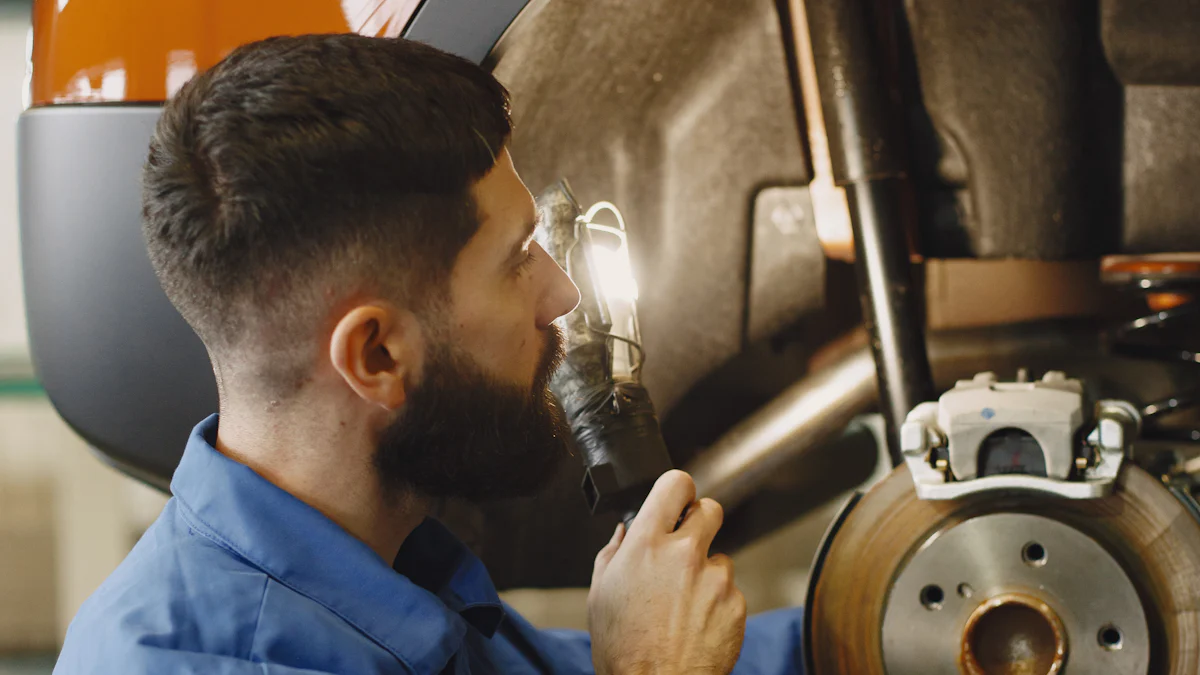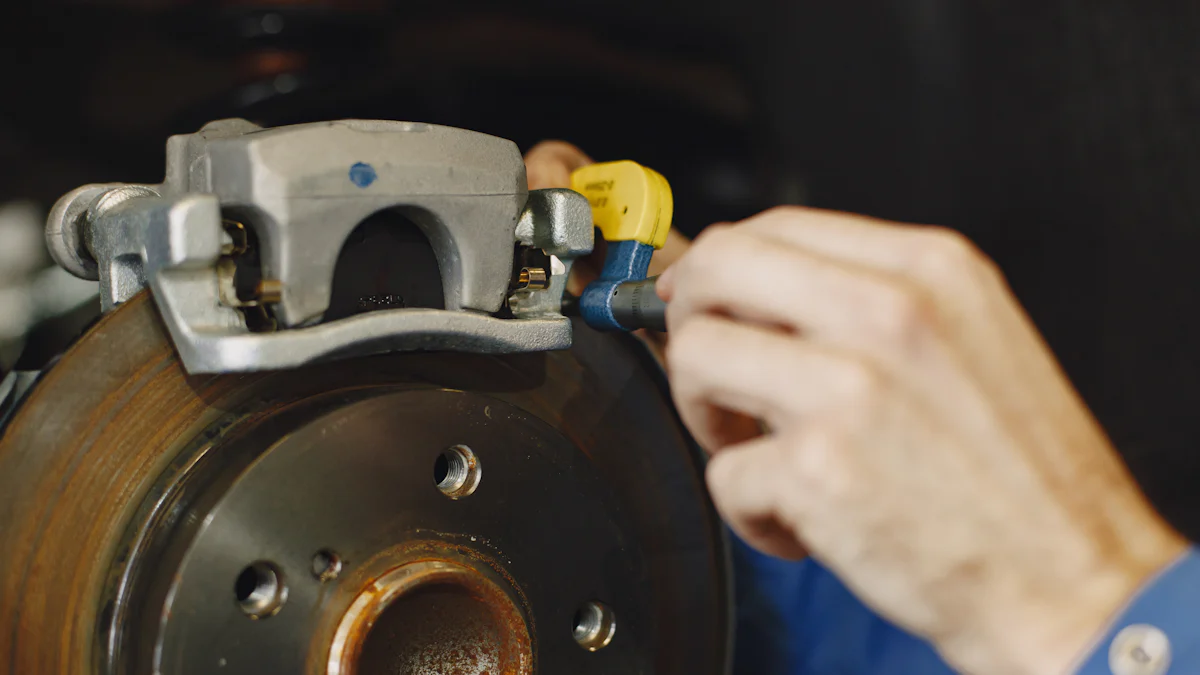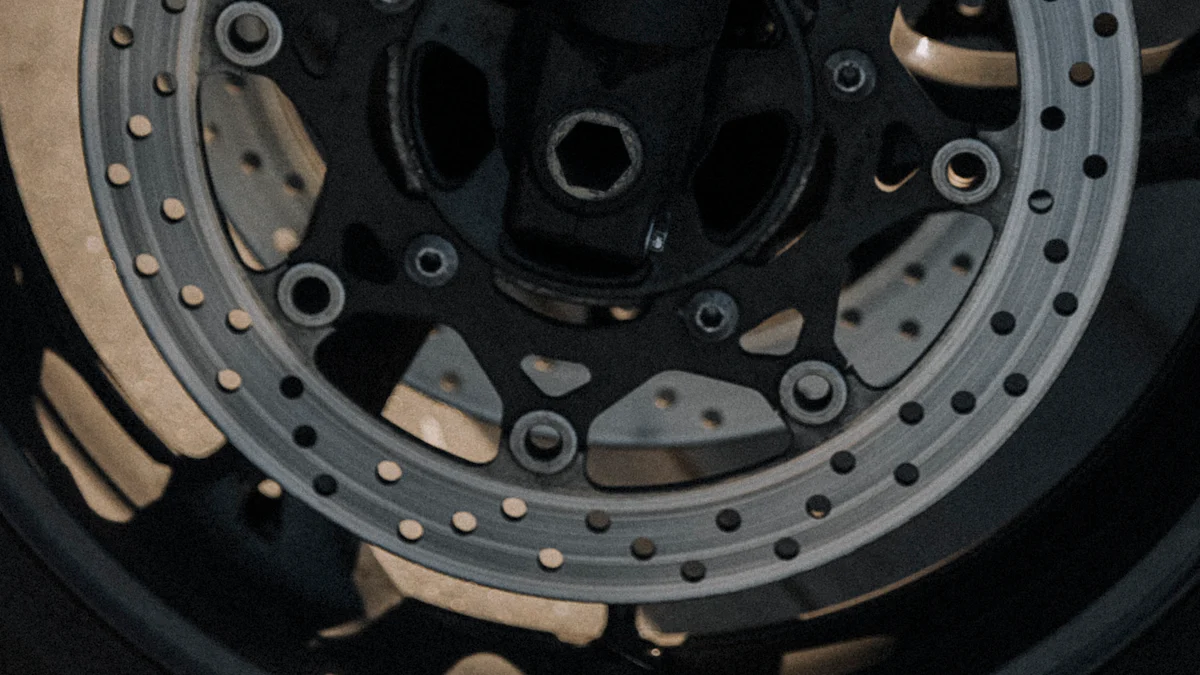
Caging a brake chamber involves manually compressing the spring inside the chamber to release the brakes. This process becomes essential during emergencies when the brakes lock, preventing the vehicle from moving. You must prioritize safety by using proper tools and following the correct steps. Always stay cautious to avoid accidents during this procedure.
Key Takeaways
- Locking a brake chamber helps release stuck brakes in emergencies. Always stay safe and use proper tools.
- Collect tools like a caging bolt, wrench, and gloves first. A clean, bright workspace helps prevent accidents.
- After locking, check if the brakes release by moving the vehicle. If brakes stay stuck, check the bolt and try again.
Understanding the Brake Chamber and Its Purpose

What is a brake chamber?
A brake chamber is a critical component of your vehicle’s air brake system. It converts compressed air into mechanical force, which activates the brakes. This device contains a diaphragm, a return spring, and a pushrod. These parts work together to ensure the brakes engage when needed. You will typically find brake chambers on heavy-duty vehicles like trucks and buses. They are designed to handle the high demands of these large vehicles.
How does a brake chamber function in the braking system?
The brake chamber operates by using air pressure to push against the diaphragm inside it. When you press the brake pedal, compressed air flows into the chamber. This air pressure forces the diaphragm to move, which pushes the rod outward. The rod then transfers this force to the brake mechanism, causing the brakes to engage. When you release the pedal, the return spring inside the chamber pulls the diaphragm and rod back to their original positions. This process ensures the brakes disengage smoothly.
Why is caging a brake chamber necessary?
Caging a brake chamber becomes necessary when the spring brake locks due to a loss of air pressure or a mechanical failure. This situation can immobilize your vehicle, creating a safety hazard. By caging the brake chamber, you manually compress the spring inside it. This action releases the brakes, allowing you to move the vehicle to a safer location. Remember, this is a temporary solution and not a replacement for proper repairs.
Step-by-Step Guide to Caging a Brake Chamber

Tools and equipment required.
Before starting, gather the necessary tools. You will need a caging bolt, a wrench or socket set, and safety gloves. A flashlight can help if the area around the brake chamber is poorly lit. Having wheel chocks is also essential to prevent the vehicle from moving unexpectedly. These tools ensure you can complete the process safely and efficiently.
Locating the brake chamber and caging bolt.
Find the brake chamber on the axle where the issue has occurred. It is a round, metal component attached to the brake system. Look for the caging bolt, which is usually stored on or near the chamber. If you cannot locate it, consult the vehicle’s manual for guidance. Identifying the correct chamber and bolt is crucial for the procedure.
Inserting and securing the caging bolt.
Insert the caging bolt into the designated hole on the brake chamber. Push it in until it locks into place. Once inserted, turn the bolt slightly to ensure it is secure. This step prepares the chamber for the next phase of the process.
Tightening the bolt to release the spring brake.
Use your wrench or socket to tighten the caging bolt. Turn it clockwise until the spring inside the brake chamber compresses. This action releases the spring brake, allowing the wheels to move freely. Tighten the bolt firmly but avoid over-tightening, as this could damage the chamber.
Testing the brake release for proper execution.
After tightening the bolt, test the brake release. Attempt to move the vehicle slightly to confirm the brakes are no longer locked. If the wheels move freely, the process was successful. If not, recheck the bolt and repeat the steps as needed. Always verify the results before proceeding.
Safety Tips for Caging a Brake Chamber
Preparing the vehicle and work area.
Start by parking the vehicle on a flat, stable surface. Engage the parking brake to prevent any movement. Place wheel chocks around the tires to secure the vehicle further. Inspect the work area for hazards like loose tools or debris. A clean and organized space reduces the risk of accidents. Ensure proper lighting, especially if you are working in dim conditions. If possible, use a flashlight or portable work light to illuminate the brake chamber.
Wearing appropriate safety gear.
Always wear the right safety gear before starting the procedure. Use gloves to protect your hands from sharp edges or hot surfaces. Safety glasses shield your eyes from debris or unexpected air pressure releases. Steel-toed boots provide extra protection for your feet. Avoid loose clothing that could get caught in moving parts. Proper gear keeps you safe and minimizes the chances of injury.
Avoiding common mistakes during the process.
Avoid rushing through the procedure. Take your time to follow each step carefully. Ensure the caging bolt is the correct size and properly inserted. Using the wrong bolt can damage the brake chamber or fail to release the spring brake. Double-check that the bolt is tightened securely but not over-tightened. Over-tightening can strip the threads or cause other damage. Finally, never skip testing the brake release. Confirming the brakes are disengaged ensures the process was successful.
Caging a brake chamber offers a temporary fix. You must move the vehicle to a safe location immediately after completing the process. Avoid relying on this as a permanent solution. If you feel uncertain about any step, consult a professional mechanic.
Tip: Always prioritize safety and schedule proper repairs as soon as possible.
FAQ
What should you do if the caging bolt is missing?
If the caging bolt is missing, check the vehicle’s manual for alternatives. You may need to purchase a replacement bolt from a trusted supplier.
Can you drive long distances after caging a brake chamber?
No, you should not drive long distances. Caging is a temporary fix. Move the vehicle to a safe location and schedule professional repairs immediately.
How can you tell if the brake chamber is damaged?
Inspect the chamber for visible cracks, leaks, or unusual noises. If you notice any of these signs, replace the brake chamber to ensure safe operation.
Post time: Jan-17-2025

